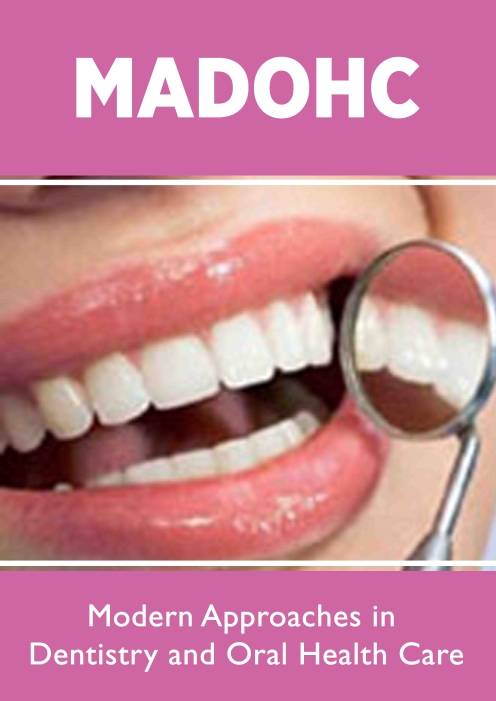
Lupine Publishers Group
Lupine Publishers
Menu
ISSN: 2637-4692
Research Article(ISSN: 2637-4692) 
Comparative Evaluation of the Irradiance Emitted by Different Methods of Photopolymerization Volume 3 - Issue 2
Diogo de Azevedo Miranda1*, Anderson Quirino Prenassi2, Gabriel Furtado Corrêa2 and Juliana Abdallah Mendes Costa2
- 1Adjunct Professor of Faculty of Medical Sciences, Department of Dentistry and Health of Juiz De Fora, Brazil
- 2Student, Dental of Faculty of Medical Sciences and Health of Juiz De Fora, Brazil
Received: October 03, 2018; Published: October 10, 2018
Corresponding author: Diogo de Azevedo Miranda, Rua Sampaio 330/602, 1Adjunct Professor of Faculty of Medical Sciences, Department of Dentistry and Health of Juiz De Fora, Brazil
DOI: 10.32474/MADOHC.2018.03.000160
Abstract
Introduction: To obtain success in the polymerization of restorative materials, obtaining a quality, it is necessary a light curing device and this in turn must be in proper operation. It is to be known that some other factors will influence these restorations as the emission and intensity of the light, adequate time of exposure and correct wavelength. Most of the three methods of light curing are used: High intensity in continuous light (High), increasing intensity (Soft-Start) and low (Low) intensity. The alteration between the above methods according to the time of exposure may cause different effects and should be chosen according to the need of the restorative procedure to be performed.
Objective: To compare the photoactivation modes (High and Soft Start) emitted by two different devices (Dabi and Gnatus). All photo activators come from the Dental Clinic of Maternities Terezinha de Jesus Hospital.
Method: An analysis of variance (ANOVA) was applied, considering the two device brands (Dabi and Gnatus) in the statistical model, so that the two photoactivation modes (High and Soft start) were evaluated in the same apparatus. All analyzes were performed in the R * program considering the level of significance of 5%.
Results: It was observed that the Gnatus device presented higher mean irradiance (energy density), p <0.05, independent of the photoactivation mode. It is also observed that, for both devices, higher irradiance averages were observed with the high photoactivation mode (p <0.05).
Conclusion: The two methods tested reached the minimum value indicated for polymerization of resinous materials, however, the Gnatus showed higher mean irradiance, and in both appliances the High method presented values statistically higher than the Soft Start method.
Keywords: Light; Irradiation; Polymerization
Introduction
With the implantation of the salt-based materials and prepared in a restorative meal, through more natural treatments, resembling the natural tooth [1,2]. The first composite resins launched on the market were called self-curing. These resins were based on the blending of a universal paste and other catalyst paste, which had some drawbacks, such as handling thereof, resulting in unsatisfactory clinical results. To meet the clinical needs, over time there has been the experience of such materials [1,2]. The appearance of the photopolymerizable composite resins occurred, which were based on the polymerization of the restorative material with the emission of a radiation generated by a light source. However, for the same results, this light emission depends on the quality and intensity of the light source [1,2]. The polymerization of the restorative materials as well as the quality thereof depends directly on a photopolymerizer. For the welcome to be successful, factors such as light emission and intensity, exposure time, and wavelength are needed [3].
To effect the polymerization of the resins in cubes, it is possible to use most of the cases by means of visible light, with a wavelength between 400 and 500nm [1]. The steps of manipulation of the materials, their photopolymerization and the restorative technique used, are factors that must be taken into consideration [4].
For polymerization of each increment of 2mm of resin, it is possible to undergo an exposure time of 40 to 60 seconds with an emission of final halogen light intensity of 400 mW / cm2. It was verified that the intensity was the factor that less influence in the polymerization of the layer of composite resin. However, studies show that from 1mm deep, there is a deficiency in resin polymerization, because the greater the depth, the greater the importance of light intensity [5]. The calibration of light-curing devices is of fundamental importance, as the light intensity below 200 mW/cm2 will interfere directly, so they should be referred for maintenance. It is to be known that the light intensity, frequency and time of use of the light curing apparatus are closely related. It is recommended that devices with light intensity between 201 and 399 mW/cm2 are acceptable, provided that the polymerization time is increased [6,7]. Large increments of composite resin are not recommended, as they may interfere with the passage of light, presenting residual monomers and consequently altering the result [3,8,9].
The composition of the most traction light-curing devices has a quartz-tungsten-halogen lamp. These have a tungsten filament associated with electrodes, generating light and heat due to the flow of electricity [8]. Currently, three different methods of photopolymerization are used, the first one being “High” where continuous action of light in high intensity occurs with a shorter exposure time, which becomes necessary for a complete polymerization and ideal mechanics; the “Low” method also has continuous light action, but with low intensity and a longer exposure time, reducing stress during polymerization by increasing the composite capacity; the “Soft Start” method has varying intensities, starting from low to high, without reducing the mechanical properties of the resin [9]. The alteration between the above methods according to the time of exposure may cause different effects and should be chosen according to the need of the restorative procedure to be performed. The aim of this work was to carry out a comparative evaluation of the irradiance emitted by the “High” and “Soft Start” photopolymerization methods, emitted by two different devices.
Materials and Methodology
Experimental Design: The factors studied were light stabilizers in two levels (n = 8) - Dabi Atlante apparatus and Gnatus apparatus and two photoactivation modes: High and Soft-Start. The response variable was the irradiance values emitted after the test with the two modes of photoactivation by measuring with an irradiometer.
Reading of Apparatus Irradiance: The present study was of the experimental quantitative character, whose non-probabilistic sample was initially composed by 10 photoactivators. All the photoactivators come from the Dental Clinic of the Hospital Maternidade Terezinha de Jesus - SUPREMA and were evaluated for inclusion in the study through the validation of their batteries. However, 2 (two) devices were unloaded being a reason for exclusion from the survey, so we tested 8 devices. For the reading, the universal irradiometer supplied by the company SDI was used, when carrying out the measurements it was necessary to calibrate it every 4 readings, because after the same it was de-calibrated. After removing the devices from the loader bases, each device was placed directly on the sensor of the irradiometer and after 20 seconds of intermittent light the device emitted the value of the irradiance generated by each device.
Results
Statistical Analysis
After the exploratory analysis of the data, a variance analysis (ANOVA) was applied, considering the two device marks (Dabi and Gnatus) in the statistical model, so that the two photoactivation modes Soft start). All analyzes were performed in the R* program considering the level of significance of 5%.
a) *R Core Team (2017) R: A language and environment for statistical computing. R Foundation for Statistical Computing, Vienna, Austria. URL https://www.R-project.org/.
Analysis of Irradiance
Figure 1: Mean (standard deviation) of the irradiance as a function of the photoactivation mode and the apparatus.
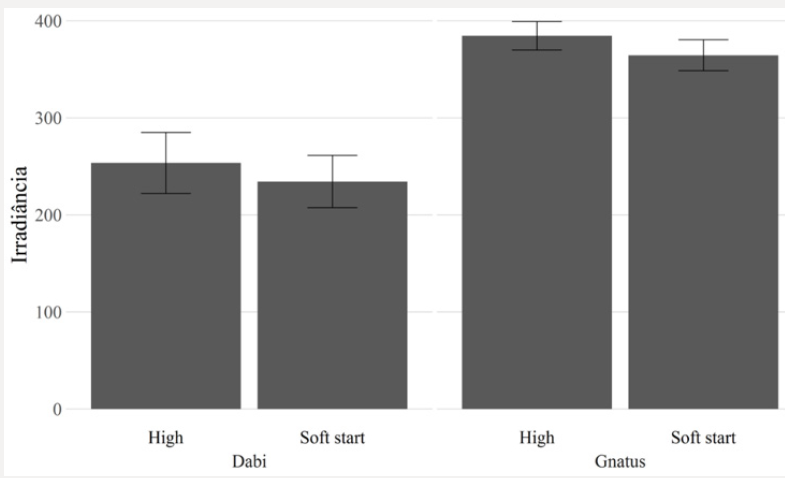
It can be observed in Table 1 and Figure 1 that the Gnatus device presented higher mean irradiance (energy density), p <0.05, independent of the photoactivation mode. It is also observed that, for both devices, higher irradiance averages were observed with the high photoactivation mode (p <0.05). Distinct letters (lowercase in vertical and uppercase in horizontal) indicate significant differences (p≤0.05). Result of analysis of variance: Apparatus: p <0.0001. Photo-activation: p = 0.0002. Apparatus × Photo-activation = 0.9026.
Table 1: Mean (standard deviation) of the irradiance as a function of the photoactivation mode and the apparatus.

Discussion
Photopolymerization is widely used in restorative dentistry, it is one of the simplest forms of transformation of monomers into polymers [10]. The efficiency of the restorations depends on some factors: sufficient irradiance, emission and light intensity, the correct wavelength and adequate time of light exposure, as well as the choice of restorative material to be used and the correct composite resin insertion technique [11,12]. It is necessary to accurately characterize the irradiance emitted by photopolymerizers to reduce the risk of failure. Information on the light output and absorption spectrum of its resin-based compound should be basic information provided by the manufacturers [13]. In the process of photopolymerization, some care must be taken into account, because over time the degradation of the components of these devices, directly interfering in the clinical results.
The type of tip used (dark, transparent), residues found at the tips of the appliances, charging the appliance (partial, total), the time of acquisition and operation are factors that must be taken into consideration. The alterations of these devices are visually imperceptible, being necessary to carry out their maintenance periodically for their perfect functioning [13,14]. Regarding light intensity values, it is recommended that devices with an intensity of less than 200mW/cm2 be referred for maintenance, as the composite resin will not be adequately polymerized [15]. Apparatus with light intensity between 201 to 399mW/cm2 are acceptable, but require an additional polymerization time [6,16]. Regardless of the type of apparatus and the photoactivation mode, the tested devices are emitting light intensity lower than desired. Therefore, in order to achieve an optimal polymerization, it is suggested an increase in the time of photoactivation, which results in a longer time of clinical care [17].
According to the results of this study, a greater efficacy was demonstrated in the “High” method when compared to the “Soft Start” method. Such a difference is due to the “High” emitting a light with high intensity throughout the process. The “Soft” is characterized by the intensity of the light in a gradual way [15]. Some studies show that the Soft Start mode would be better because it attenuates the effects of a strong polymerization contraction, however, in this study the results found differ from the literature [14]. Another factor that may explain the results of this study, refer to the type of tip used by the devices tested. The Dabi Atlante apparatus has a transparent acrylic tip, which causes a greater light dispersion to the irradiated surface; the Gnatus device has a dark fiber optic tip, which does not allow light to be dispersed to the irradiated surface. Thus, it can be stated that the differences found in Table 1 are justified by the type of tip. However, in this study, it was not verified the time of use of the photopolymerizing devices in the clinic, as well as the quality of the tips two appliances, being able to be dirty, with remains of resinous materials and even, broken [18-20].
Conclusion
From the results found in this study we can conclude that
a) The High method presented higher values of irradiance when compared to the Soft-Start method.
b) The Gnatus device presented higher irradiance means when compared to the Dabi apparatus.
c) Regardless of the photoactivation mode, the devices are capable, however they need a longer exposure time.
Clinical Implications
This study suggests that the mean surface roughness of the silicone-based soft liner samples increased consistently, when used as a functional impression material, in relation to the acrylic-based soft liner, over a period of time.
References
- Jandt KD, Mills RW (2013) A brief history of LED photopolymerization. Dental materials 29(6): 605-17.
- Caldarelli PG, Beltrani FC, Pereira SK, Cardoso AS, Hoeppner MG (2011) Aparelhos fotopolimerizadores: evolução e aplicação clínica - uma revisão da literatura. Odontol. Clín.-Cient 10(4): 317-321.
- Freitas SAA, Costa JF, Bauer JRO (2011) Avaliação da intensidade da luz dos aparelhos fotopolimerizadores utilizados em clínicas odontológicas de São Luís - MA. Revista Pesquisa Saúde 12(2): 27-31.
- Pereira SK, Pascotto RC, Carneiro FP (2003) Avaliação dos aparelhos fotopolimerizadores utilizados em clínicas odontológicas. J Bras Dent Estet 2(5): 29-35.
- Correia IB, Teixeira HM, Nascimento ABL, Costa SX, Galindo RM, Azevedo LM, Maciel WV (2005) Avaliação da intensidade de luz, da manutenção e do método de utilização dos fotopolimerizadores utilizados nos consultórios da cidade de Caruaru-PE. Rev Odontol UNESP 34(3): 113- 118.
- Gouveia CVD, Costa MF, Costa Neto CA, Magalhães Filho TR, Barros RN (2008) Avaliação dos aparelhos fotoativadores utilizados em Odontologia. RGO56(4): 399-403.
- Contarin CR, Casalli JL, Rigo L (2015) Avaliação da potência dos aparelhos fotopolimerizadores utilizados no curso de odontologia da IMED. J Oral Invest 4(1): 19-25.
- Borges FMGS, Rodrigues CC, Freitas SAA, Costa JF, Bauer J (2011) Avaliação da intensidade de luz dos fotopolimerizadores utilizados no curso de odontologia da universidade federal do Maranhão. Revista Ciência Saúde 13(1): 26-30.
- Barros GK, Aguiar FH, Santos AJ, Lovadino JR (2003) Effect of Different Intensity Light Curing Modes on Microleakage of Two Resin Composite Restorations. Oper Dent 28(5): 642-646.
- Besse V, Derbanne MA, Pham T, Cook WD, Pluart LL (2016) Photopolymerization study and adhesiveproperties of self-etch adhesives containingbis (acyl) phosphine oxide initiator. Dental materials 32: 561- 569.
- Reis A, Loguércio AD (2007) Materiais dentários restauradores diretos: dos fundamentos à aplicação clínica. (1st edn). Livraria Santos Editora, São Paulo, Brazil, pp. 277.
- Mazur RF, Ignacio SA, Ferronato T, Koerich G, Vieira S (2004) Avaliação da qualidade dos aparelhos fotopolimerizadores da clínica odontológica da PUC-PR. Rev Ibero-am Odontol Estet Dent 3: 160-168.
- Pereira SK, Porto CLA, Mendes AJD (2001) Efeitos de diferentes sistemas de fotopolimerização na dureza superficial da resina composta. J Bras Clin Estet Odont 5(26): 156-161.
- Poulos JG, Styner D (2000) Lâmpada de polimerização: alterações no rendimento da intensidade de luz com o tempo de trabalho. Jornal de Clínica em Odontologia (6): 47-53.
- Chang Hs, Cho Kj, Park Sj, Lee Cn, Hwang Yc, et al. (2013)Thermal analysis of bulk filled composite resin polymerization using various light curing modes according to the curing depth and approximation to the cavity wall. J Appl Oral Sci 21(4): 293-299.
- Vieira GF, Erhardt AE, Shroeder LF (2000) Intensidade de luz de aparelhos fotopolimerizadores utilizados em consultórios particulares. J Bras Clin Estet Odont 4(22): 41-44.
- Kreidler MA, Rastelli ANS, Andrade MF (2004) Avaliação da intensidade de luz de aparelhos fotopolimerizadores. J Bras Clin Odontol Integr 8: 249-253.
- Azevedo DM, Catelan A (2018) Living Polymerization Techniques and Their Utility in Material Synthesis. Ann Clin Case Rep 3: 1494.
- Watanabe H, Kazama R, Asai T, Kanaya F, Ishizaki H, Fukushima M, et al. (2014) Efficiency of the Dual-Cured Resin Cement Polymerization Induced by High-Intensity LED Curing Units Through Ceramic Material. Operative Dentistry 40(2): 153-162.
- Price RB, Ferracane JL, Shortall AC (2015) Light-Curing Units: A Review of What We Need to Know. Dental Research 94 (9): 1179-1186.

Top Editors
-

Mark E Smith
Bio chemistry
University of Texas Medical Branch, USA -

Lawrence A Presley
Department of Criminal Justice
Liberty University, USA -

Thomas W Miller
Department of Psychiatry
University of Kentucky, USA -

Gjumrakch Aliev
Department of Medicine
Gally International Biomedical Research & Consulting LLC, USA -
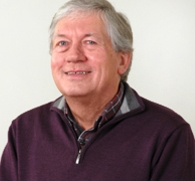
Christopher Bryant
Department of Urbanisation and Agricultural
Montreal university, USA -

Robert William Frare
Oral & Maxillofacial Pathology
New York University, USA -

Rudolph Modesto Navari
Gastroenterology and Hepatology
University of Alabama, UK -
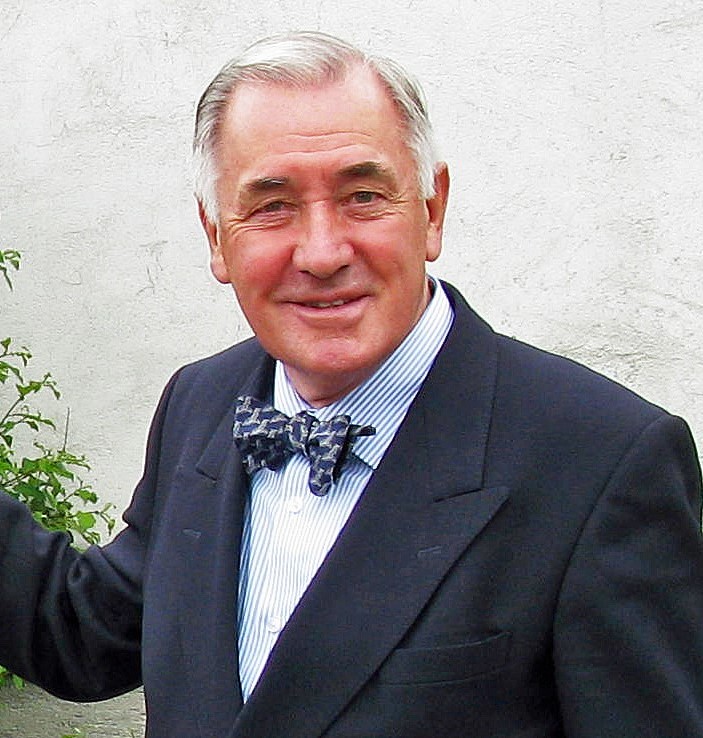
Andrew Hague
Department of Medicine
Universities of Bradford, UK -

George Gregory Buttigieg
Maltese College of Obstetrics and Gynaecology, Europe -
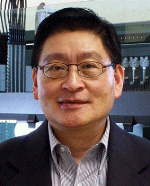
Chen-Hsiung Yeh
Oncology
Circulogene Theranostics, England -
.png)
Emilio Bucio-Carrillo
Radiation Chemistry
National University of Mexico, USA -
.jpg)
Casey J Grenier
Analytical Chemistry
Wentworth Institute of Technology, USA -
Hany Atalah
Minimally Invasive Surgery
Mercer University school of Medicine, USA -

Abu-Hussein Muhamad
Pediatric Dentistry
University of Athens , Greece

The annual scholar awards from Lupine Publishers honor a selected number Read More...










